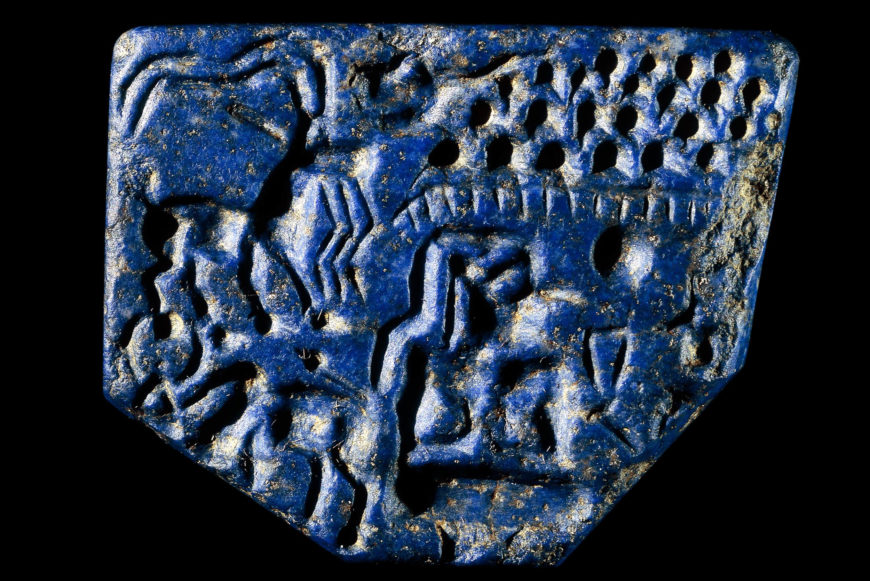
Stamp seal, c. 2400–2000 B.C.E., Bronze Age Iran, Lapis lazuli, 2.3 x 3.10–4 cm (© Trustees of the British Museum)
This stamp seal was originally almost square, but because of damage one corner is missing. Originally two figures faced each other. The one on the left has largely disappeared. On the right is a man with his legs folded beneath him. It is suggested that at the top are rain clouds and rain or a fenced enclosure. Behind the man are a long-horned goat above a zebu. This last animal is related in style to similar creatures depicted on seals from the Indus Valley civilization, which was thriving at this time. There were close connections between the Indus Valley civilization and eastern Iran.
One of the prized materials that was traded across the region was lapis lazuli, the blue stone from which this seal is made. The Sar-i Sang mines in the region of Badakhshan in north-east Afghanistan were probably the source for all lapis lazuli used in the ancient Near East. From here it was carried across Iran, where several lapis working sites have been discovered, and on to Mesopotamia and Egypt. Another source for lapis lazuli exists in southern Pakistan (a region of the Indus Valley civilization) but it is unclear if they were mined at the time of this seal.
© Trustees of the British Museum

